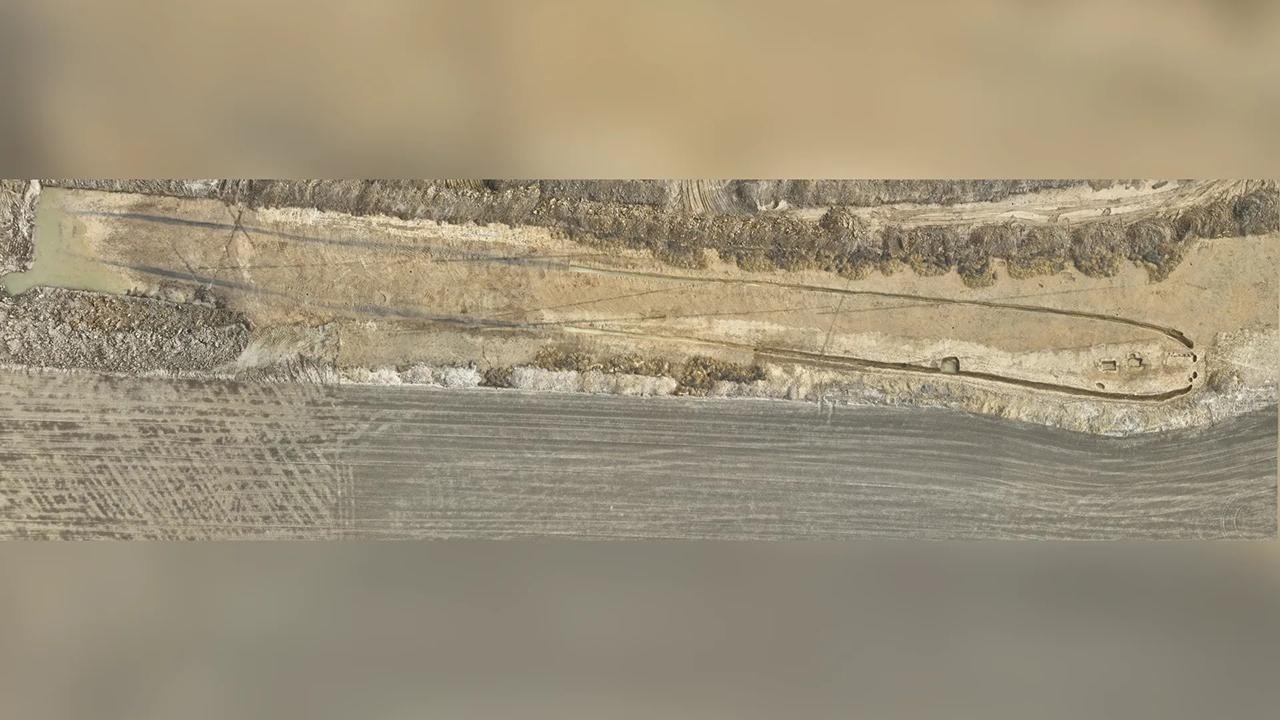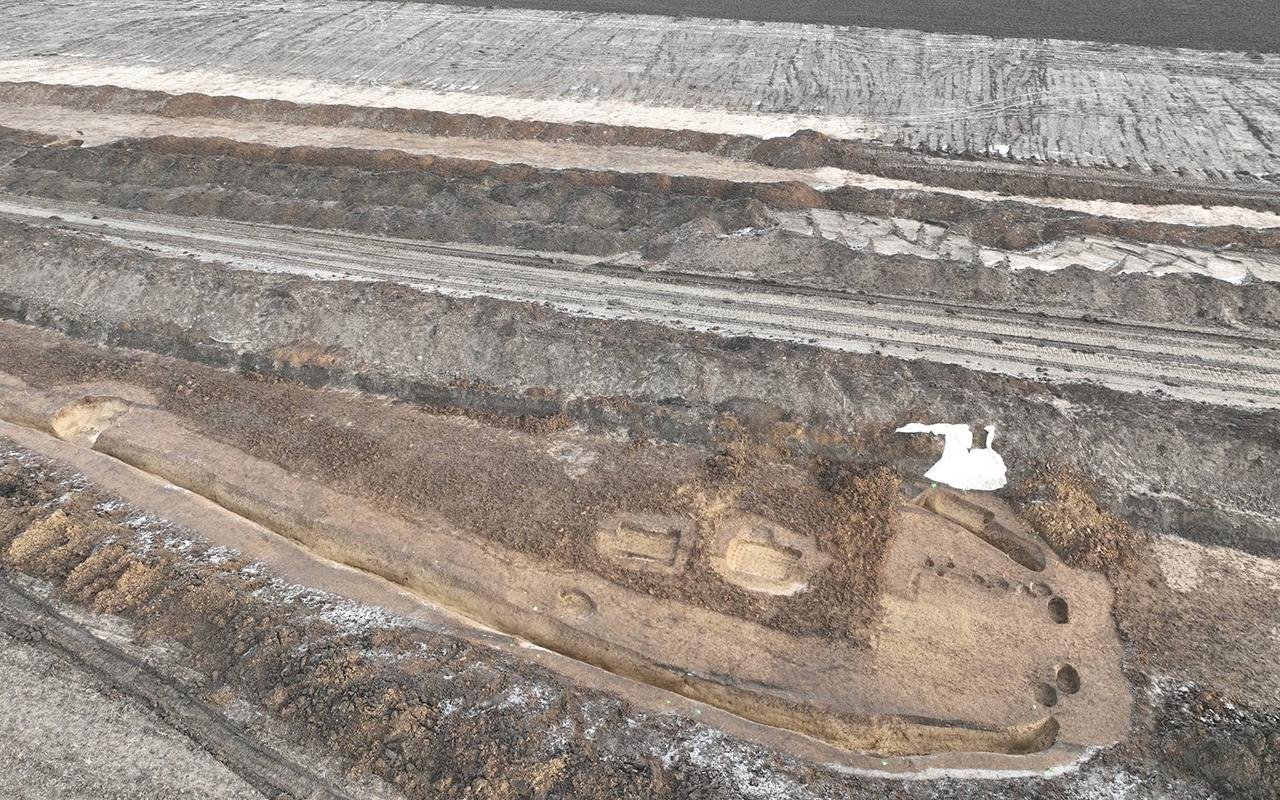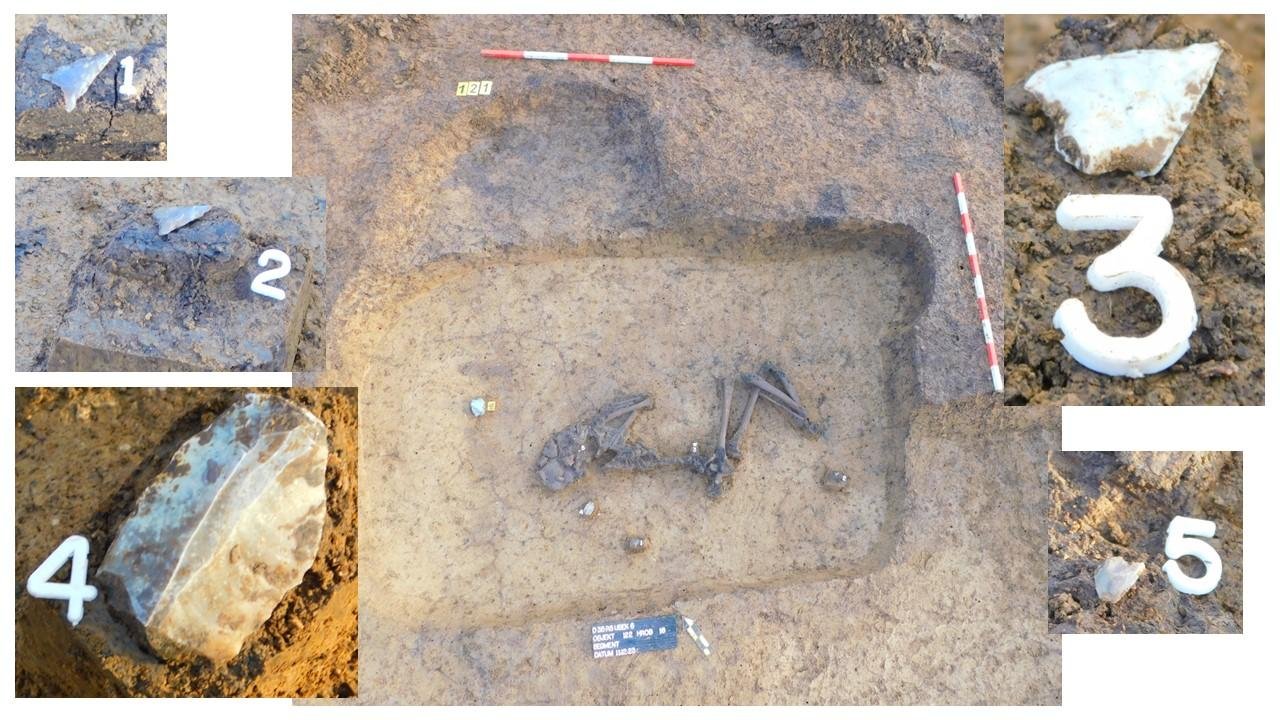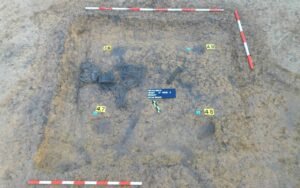
Archaeology
Archaeology is the study of human history and prehistory through the excavation and analysis of artefacts, structures, and other physical remains.
Archaeology is the study of human history and prehistory through the excavation and analysis of... View more
Archaeologists discover 5,300-year-old burial mound, Europe’s longest, in Czechia
-
Archaeologists discover 5,300-year-old burial mound, Europe’s longest, in Czechia
During a recent highway construction project in Czechia, archaeologists have unearthed one of the largest prehistoric burial mounds in Europe.

General view of the long barrow. Credit: Department of Archaeology at the University of Hradec Králové The find occurred between the villages of Dlouhé Dvory and Lípa, northeast of Prague, along the route of a future motorway near Dohalice. The Department of Archaeology at the University of Hradec Králové announced the discovery in a Facebook post.
The initial clue was an “elongated trapezoidal gutter,” a typical feature of long barrows—ancient burial mounds dating back to the Eneolithic period, specifically the Funnel-<a class="wpg-linkify wpg-tooltip" title="
Bell Beaker culture
The Bell Beaker culture, also known as the Beaker culture, is an archaeological phenomenon that emerged during the Late Neolithic and Early Bronze Age in Western Europe. It is characterized by the presence of distinctive bell-shaped pottery vessels, which gave the culture its name. The Bell Beaker culture was widespread across Europe, spanning from the Iberian Peninsula to the British Isles and from Central Europe to the Mediterranean. This article explores the key aspects of the Bell Beaker culture and” href=”https://archaeologymag.com/encyclopedia/bell-beaker/” target=”_blank”>Beaker culture, between 3800 and 3350 BCE. Further excavation revealed the full extent of the mound: an enormous structure measuring approximately 620 feet (about 190 meters) in length and 50 feet (15 meters) at its widest point. This discovery places it among the longest prehistoric mounds in Central Europe.

Detail of the entrance to the barrow. Credit: Department of Archaeology at the University of Hradec Králové An aerial photograph of the site shows the massive oval shape of the mound, which, despite its age, remains a significant archaeological find. Unfortunately, the above-ground portion of the mound has been lost, likely due to agricultural activities over the millennia. However, the remaining section has provided a wealth of information.

First central burial/Second central burial. Credit: Department of Archaeology at the University of Hradec Králové Archaeologists unearthed two central burials, believed to be for the individuals for whom the mound was originally constructed, as well as 28 additional burials. The graves and the mound are estimated to be at least 5,300 years old.
“The burial mounds were built as monumental funerary objects and as such they contain graves, we call them central burials and assume that they are the burials of the individuals for whom the mound was built,” the archaeologists explained in their statement. Laboratory analysis will soon provide more precise dating of the burials.

Second central burial. Credit: Department of Archaeology at the University of Hradec Králové The central burials revealed intriguing details. The first central grave featured an internal pit construction with gutters along the longer sides and post holes at the corners. A ceramic vessel was found as a grave offering, with the body positioned on its left side facing north. The second central burial, lacking an internal structure, also had the body lying on its left side.
In addition to the human remains, the excavation uncovered several <a class="wpg-linkify wpg-tooltip" title="
Artifact
An artifact or artefact (British English) refers to any portable object or material that has been created, modified, or used by humans. It is the basic “unit” of archaeological analysis. Artifacts can vary widely in terms of size, material, and purpose. They can include tools, pottery, jewelry, weapons, clothing, and more. These diverse forms may at times be mistaken for ecofacts and features, with all three often coexisting within archaeological sites. Archaeologists study artifacts to learn about the technological advancements,” href=”https://archaeologymag.com/encyclopedia/artifact/” target=”_blank”>artifacts. One grave contained pottery fragments, while another included four flint arrowheads and a flint blade. These artifacts were likely left as offerings and are consistent with grave inventories found at similar sites in Czechia and Poland.

Grave from the burial site in the vicinity of the long barrow. Credit: Department of Archaeology at the University of Hradec Králové The ancient burial complex is linked to the Funnel-Beaker culture, a prehistoric culture known for its distinctive pottery and burial practices.
Department of Archaeology at the University of Hradec Králové
Sorry, there were no replies found.
Log in to reply.


